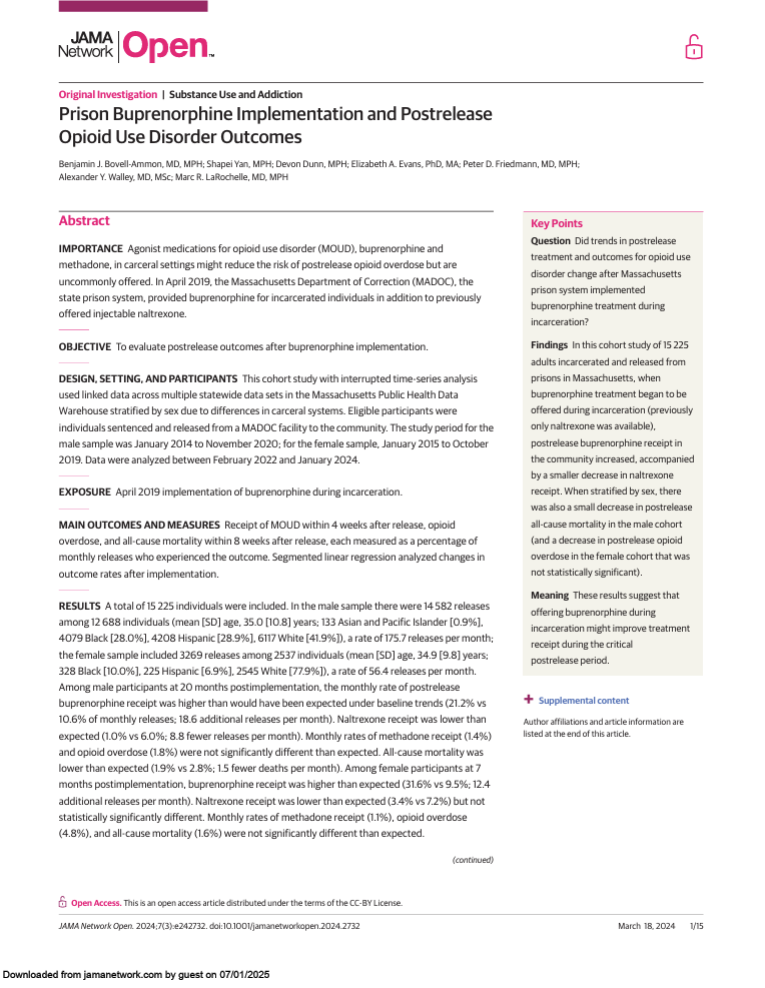Headline
Providing buprenorphine treatment to individuals with opioid use disorder in prison reduced overdose deaths and increased treatment following release.
Background
Jails and prisons do not typically offer all approved medications for opioid use disorder (MOUD) to individuals before release, even though the risk of overdose is high in this transition period. In Massachusetts, state law required the Department of Correction to offer buprenorphine, methadone, and naltrexone to eligible individuals. This study measured MOUD prescriptions filled within four weeks following release and changes in opioid-related overdoses and deaths amongst individuals in the eight weeks following release after the law was implemented.
Findings
Data from the state’s public health data warehouse were analyzed against reported releases to identify the monthly rates of filled MOUD prescriptions, overdoses, and deaths between January 2015 and October 2019 by sex for 15,225 individuals. Incarcerated individuals who received buprenorphine were more likely to continue receiving MOUD after release, especially buprenorphine. There was a decline in extended-release naltrexone in the prison once buprenorphine was also offered, suggesting that incarcerated individuals may prefer this form of MOUD. There was also a small but significant drop in post-release mortality among men and a non-significant decrease in overdoses among women.
Policy/Program Takeaways
Providing MOUD to individuals in state prisons may improve MOUD continuation and reduce overdose risk following release. State policymakers should consider expanding MOUD in correctional facilities, including allowing individuals incarcerated to have choice in MOUD treatment options.

